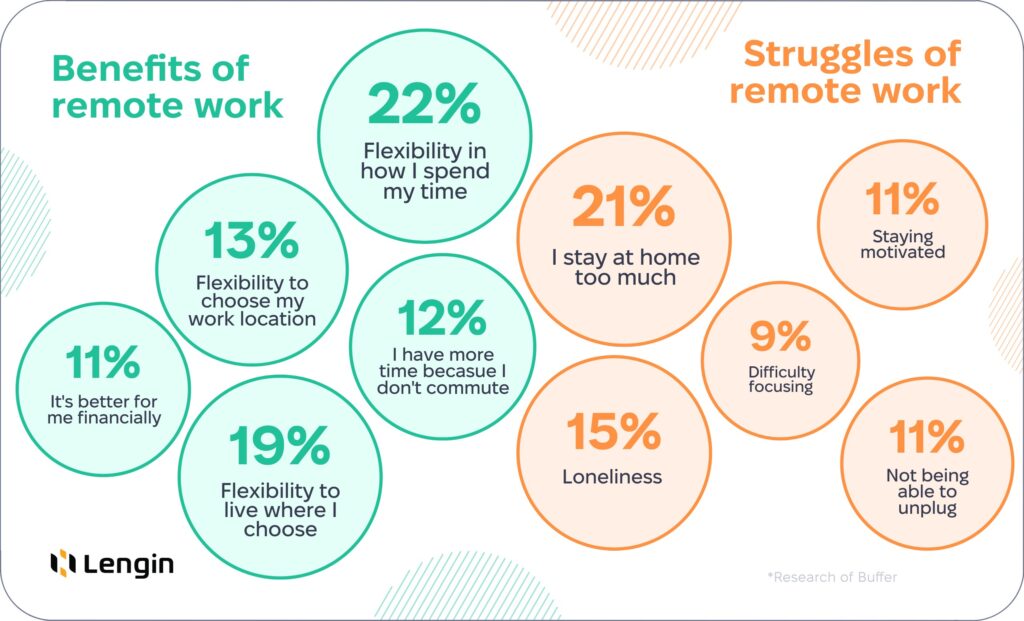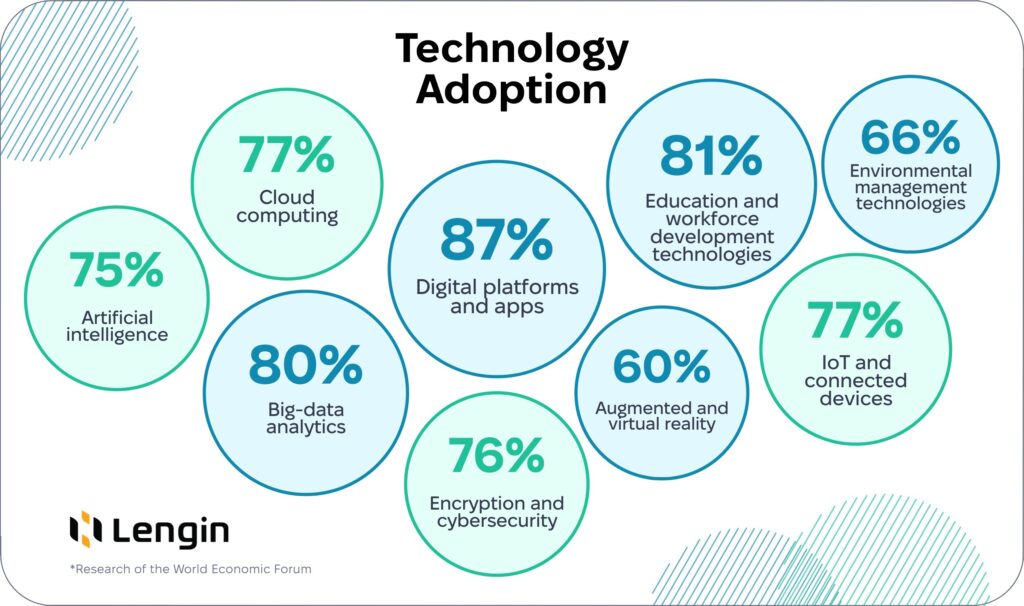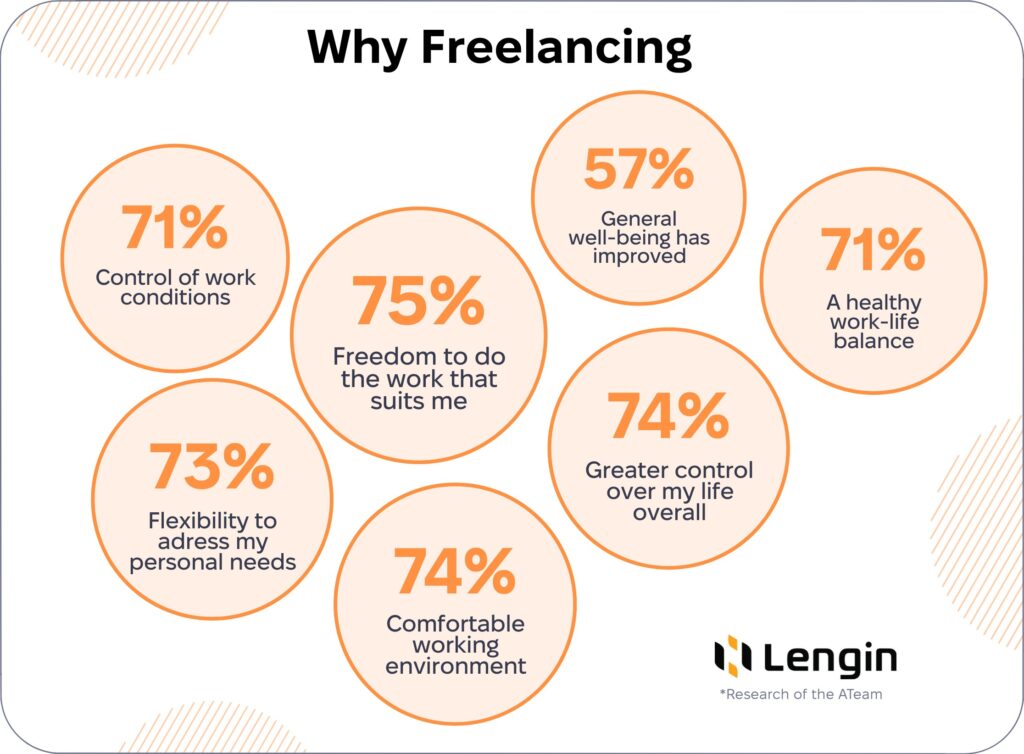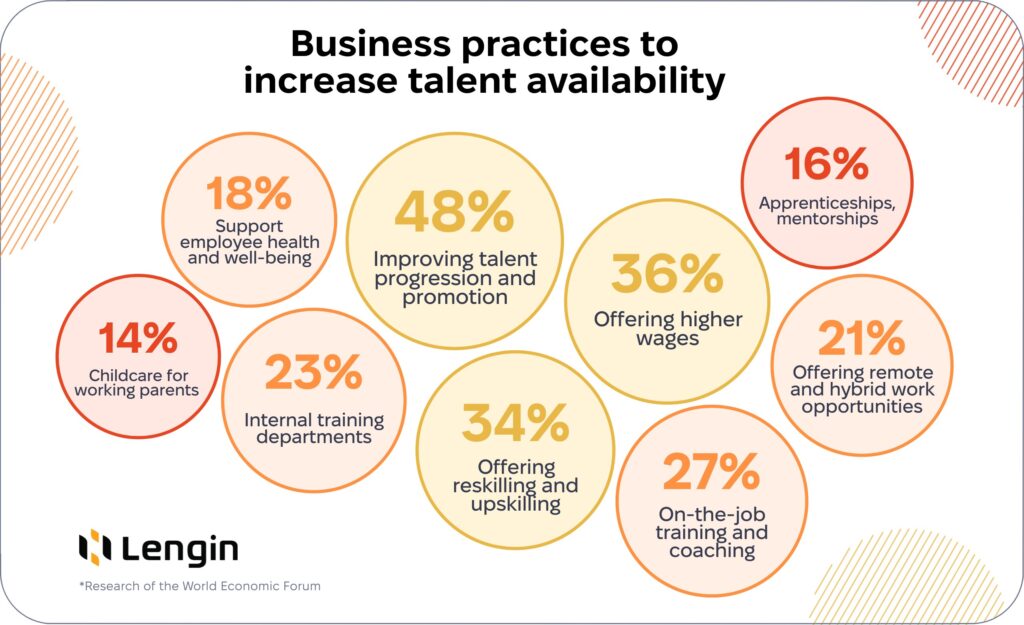The future is uncertain as always, but analysis of surveys, research, and previous trends might help to sneak behind the curtains.
Table of Contents:
Remote or Back to Office?
According to a new report by Tata Consultancy Services, over 40% of employees worldwide will work from home by 2025. Logically, the tendency to choose remote over in-office work keeps increasing because of various advantages for both employees and companies, but drawbacks are still there.

What have Meta, Amazon, Google, IBM, and Salesforce got in common? They are returning their employees to offices. Industry leaders have decided that remote work is not their option anymore, so they focus on a hybrid work model.
It leverages the advantages and eliminates the disadvantages of both approaches, making a hybrid work model a new reality.
Nevertheless, if your project goes on well entirely remotely, there is no need to change it to a hybrid. Instead, consider enhancing the digital experience of your employees.
Digital Experience
Although the World Economic Forum mentions that machines perform 34% of all business-related tasks, and 80% of companies are actively working on increasing this percentage, humans are proven to be irreplaceable.
That’s why the best solution is to combine human talent and machine efficiency by introducing AI-powered assistants.
AI assistants are related not only to personal matters but also to facilitating work processes. In terms of development, there are a lot of AI copilots. For example, GitHub Copilot, first presented in 2021, has evolved to a better version and promises to make development more productive for $4/mo.
AI coding assistants are particularly useful in the onboarding stage of remote programmers, when a newcomer has to look into the code written by previous developers, often without detailed notes. AI copilots analyze and explain the code, allowing a new team member to start working as soon as possible.
Nevertheless, AI assistants, as well as humans, are not perfect. The main concern is security. Resolving this issue has been improved, and there are new robust security algorithms, but creators of AI-powered tools are not going to stop on that.
We should expect more new security updates in 2024 because of the rapid development of Ransomware-as-a-Service (RaaS) and AI-powered attacks. Experts from Gartner predict the popularization of zero-trust security principles.
Yet, as a World Economic Forum survey shows, Artificial Intelligence is not the only technology that is popular for adoption for the next five years.

To enhance employee experience, many applications and platforms gather everything necessary for creating a productive online environment for remote workers: dashboards, communication channels, project management tools, time tracking, and the ability to add various extensions.
Since 36% of organizations still don’t have a clear strategy around how to improve the digital employee experience (Gallagher), such complex applications as SwitchBoard or Workvivo (from Zoom) have become obvious but, at the same time, cost-effective solutions.
Also, 60% of companies plan to implement augmented and virtual reality for both customer experience improvement and DEX. For example, virtual Workplace from Meta shows that workers feel more present, engaged, and less distracted because of using VR technologies, particularly for communication.
Employee Satisfaction
The attitude towards work has experienced a significant shift in terms of work-life balance over the past few years. Work no longer equals life, so employee happiness has become a new concern. Here are a few facts to understand why it is essential:
- Happy employees are 12% more productive. (Harvard University Research)
- They take 23% less sick leave. (Aon Hewitt)
- Companies with happy employees have 37% lower turnover. (Gallup)
- Happy employees are 50% more eager to recommend the company. (Glassdoor)
- Happy salespeople produce 37% more profit. (Social Market Foundation)
That’s why such things as health insurance, covering gym expenses, and childcare for working parents are typical examples of benefits that allow companies to keep their employees happy and motivated.
Also, a trend from 2015 comes back. If you are happy and you know it – become a CHO (Chief Happiness Officer) or a manager responsible for employee satisfaction. That’s one of the positions in the HR department.
Actually, small and middle-sized companies do not need a new position, but leaders can support initiatives related to team-building activities and greet the team on holidays and birthdays.
Remote workers need cheering up and the feeling of being part of the team much more than office workers.
This way, the role of human resources manager increases, so salaries and demands for this position are rising.
Gig Economy
Every year, UpWork and Fiverr conduct a survey on the state of the gig economy, presenting comprehensive statistics that allow us to predict that freelancing will thrive in 2024.
According to the latest data, freelancers are more satisfied with all areas of work than non-freelancers.

A report by McKinsey found that the IT industry is one of the top three industries that have seen the most significant growth in the gig economy, along with creative and design services and finance and law.
For many developers, UpWork, TopTal, Fiverr, and other freelance platforms have become not only a source of moonlighting but the primary source of income.
Nevertheless, many companies are not ready for the risks that involving freelancers brings but are tempted to use the benefits of outsourcing. That’s why staff augmentation and hiring remote dedicated developer teams are going to become even more widely spread practices.
Since the gig economy is involving more and more people, companies are going to experience struggles to find talents for their open positions. But the rise of freelancing is not the only pitfall here.
Talent Availability Struggles
As new technologies emerge, new skills are in demand.
The World Economic Forum predicts that approximately half the existing workforce must be retrained and upskilled in the next five years to adapt to the changing job market.
We should expect that introducing training and educational software, coaching, and mentorship will become a new widely spread tendency in 2024.
The most significant need for more experts is expected in AI and ML, cloud computing, cybersecurity, data science, DevOps, VR, and IoT.
Nevertheless, many company leaders understand that offering higher salaries is not the best and only option to attract talent to their organization, and they are already preparing to implement other business practices to increase talent availability.

Also, not only technical specialists will be in demand, but also “green experts” because of the increase in sustainability awareness.
Sustainability
To meet the goals of the Paris Agreement, global companies’ actions toward a green transition are ongoing and expected to accelerate. This way, sustainability consultants have become new figures in the labor market.
IT companies picked up this initiative, too, and have begun to encourage their employees to use more energy-efficient hardware and try to decrease the carbon footprint by choosing remote work.
But the next big thing to pay attention to is green data centers. For example, Google Cloud initiated the transition to green technologies more than a year ago and plans to use 100% carbon-free energy in its data centers by 2030.
Those changes unlocked the potential of edge computing with its various benefits besides high sustainability.
Key Takeaways
- The hybrid work model is becoming increasingly popular among dedicated developer teams.
- Companies are focusing on enhancing the digital experience of their employees by introducing new digital platforms and applications.
- Employee satisfaction has become one of the biggest concerns.
- The gig economy is thriving, but companies want to avoid hiring freelancers and instead will rely on staff augmentation and outsourcing agencies.
- The talent shortage is expected because new technologies emerge and new skills are in demand.
- Сompanies are developing business strategies for increasing talent availability for their organizations.
- The highest talent shortage is expected in AI and ML, cloud computing, cybersecurity, data science, DevOps, VR, and IoT.
- Striving for sustainability to increase, trends have shifted towards green data centers, edge computing, and climate risk management.